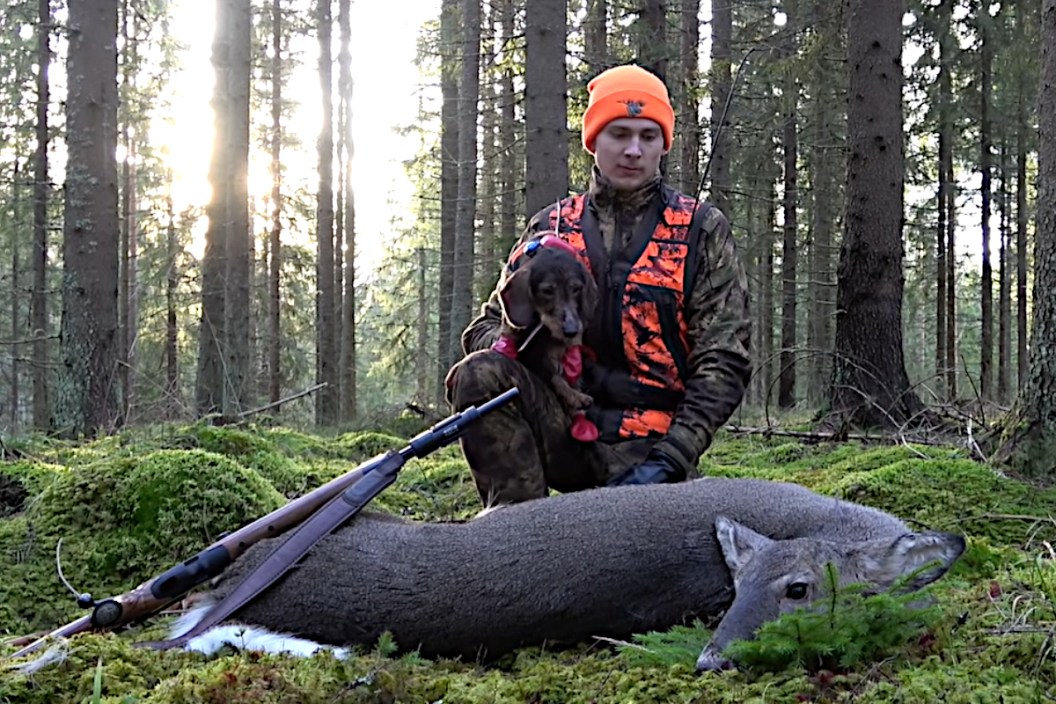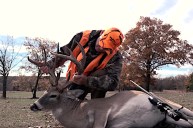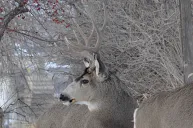Whitetails are found in more places than you think.
In the world of whitetail deer, the minds of most hunters probably immediately drift towards the known hotspots for these animals. Iowa, Illinois, Missouri, Kansas, Ohio, or Wisconsin. Of course, there are also Canadian provinces like Saskatchewan and Alberta which are known to hold some truly giant bucks. For most hunters, they think of the whitetail as strictly a North American species. The idea these animals could adapt and thrive on a different continent doesn't seem very likely.
I know I had this same train of thought. However, I recently learned these animals inhabit more corners of the globe than I previously thought. It turns out our friend the whitetail has been introduced to more locations than I ever thought possible. Although the animals are usually considered an invasive species in most of these locations. Still, these are wild, reproducing herds who have fully adapted to their new locations, in one case they have a rutting season that is completely reversed from North America's, which just helps to show how resilient and adaptive this species can be.
To answer the million-dollar question: yes, you can even hunt the deer in some of these locations. The bucks don't tend to grow as large as their North American relatives, but we don't care. Just the idea of taking a whitetail in some of these unique locations is enough to make any deer a true trophy and the experience of a lifetime.
New Zealand
This one blows our minds because it's hard to get further away than that on this planet and still find a familiar animal. It turns out the two New Zealand herds of whitetails are the only examples of northern whitetails living in the southern hemisphere. The story of how they got there is fascinating too. According to New Zealand Safaris, it was none other than Theodore Roosevelt who decided to send whitetails there in the early 1900s. Only around 22 deer from Missouri were shipped via boat, 18 of which survived the staggering 12,000-mile journey, and were subsequently spilt into two groups and released on Stewart Island and the Rees Valley near Lake Wakatipu on the South Island.
Amazingly, both herds quickly adapted to the food sources there, and are extremely healthy today. And yes, you can hunt them. According to the New Zealand Department of Conservation, there are no seasons for the animals, they can technically be hunted year-round since they aren't native.
One aspect of this herd we find fascinating is how the animal's breeding cycles completely reversed once they became Kiwis. Fawns drop in November and December and the rut takes place around May! That fact alone makes us want to add a NZ whitetail hunt to our bucket list.
Finland
This was another location that took us completely by surprise. According to the Deer Association, approximately 110,000 animals call the Northern European Nation home. And they've been there since the early 1930s when they were first introduced. Amazingly, today's booming population stems from less than a dozen animals that were either shipped by boat or flown there from Minnesota by 1948. The population grew to 10,000+ sometime in the 1970s, and the first season was held in 1960. And the government has been extremely aggressive about a heavy harvest each year because they've taken to the nation's climate and forests a little too well. They want to control the population and keep it from getting too out of hand.
Some rules for hunting whitetails in Finland are quite fascinating. The Deer Association notes that whitetails can legally be hunted 24 hours a day there. We'd be curious to see how an organization like Boone and Crockett would handle a qualifying buck shot at night there, but we digress. Their season runs from September 1 through February, and the rut is in November, so it's not too different from here in the states.
While some whitetail hunting in Finland takes place from raised stands like here in the states, we also found it interesting that dog hunting is an extremely popular tactic there too. And here we thought it was just a southern U.S. tradition.
Czech Republic
The small central European country had several attempts at introducing whitetail deer from the 1870s through the mid-1970s when a population finally produced a foothold. This population was also imported from Minnesota. For whatever reason, whitetails have had a rough go in the Czech Republic and are slow to breed there according to the Deer Association. There are only about 700 to 800 animals estimated to be living there. There is some hunting that goes on for them, but we were unable to dig up many details on the Czech Republic's rules and regulations for pursuing them.
Cuba
We're as surprised as you are on this one. While it is well-known that whitetail deer inhabit Cuba, how they got there seems to be more of a mystery. We found all sorts of conflicting information on the whitetail's introduction to the infamous island in the Caribbean. The most common explanation is they were first introduced sometime in the 1930s to try and attract visiting hunters from the United States. Which makes sense because that would place their introduction well before travel restrictions were put in place for U.S. citizens. Remember the island was extremely popular for sportsmen like Ernest Hemingway back then. It only makes sense the country would try to capitalize more on the visiting fishermen. It's a little easier to visit Cuba as a U.S. citizen these days, but we couldn't dredge up much information on hunting seasons for whitetails in Cuba. Although it seems island residents do harvest them from time to time.
Peru
Technically, the whitetails of Peru are a subspecies and not what you're used to here in the states. However, they still retain the same basic look of a regular whitetail. Just with a smaller body and antlers. According to South American Adventure Safaris, there are two different subspecies that call Peru home. By all accounts these animals are as tough to hunt as the elusive "gray ghost" Coues deer that range in Mexico and parts of the southwestern United States.
While many argue the Coues deer is the toughest whitetail hunt on the planet, Peruvian whitetails may be even harder. If only because the animals routinely hang around at elevations surpassing 11,000 feet in the Andes Mountains! That's high enough to leave even the most seasoned of hunters a little winded. While Peru is not really known as a huge hunting destination, it's started to take off in recent years. Now there is a bevy of hunting guides down there ready to take the most adventurous whitetail hunters on the adventure of a lifetime.
Products featured on Wide Open Spaces are independently selected by our editors. However, when you buy something through our links, we may earn a commission.
For more outdoor content from Travis Smola, be sure to follow him on Twitter and check out his Geocaching and Outdoors with Travis YouTube channels.
NEXT: THE AXIS DEER AND HOW THEY'RE IMPACTING PARTS OF THE UNITED STATES
WATCH





